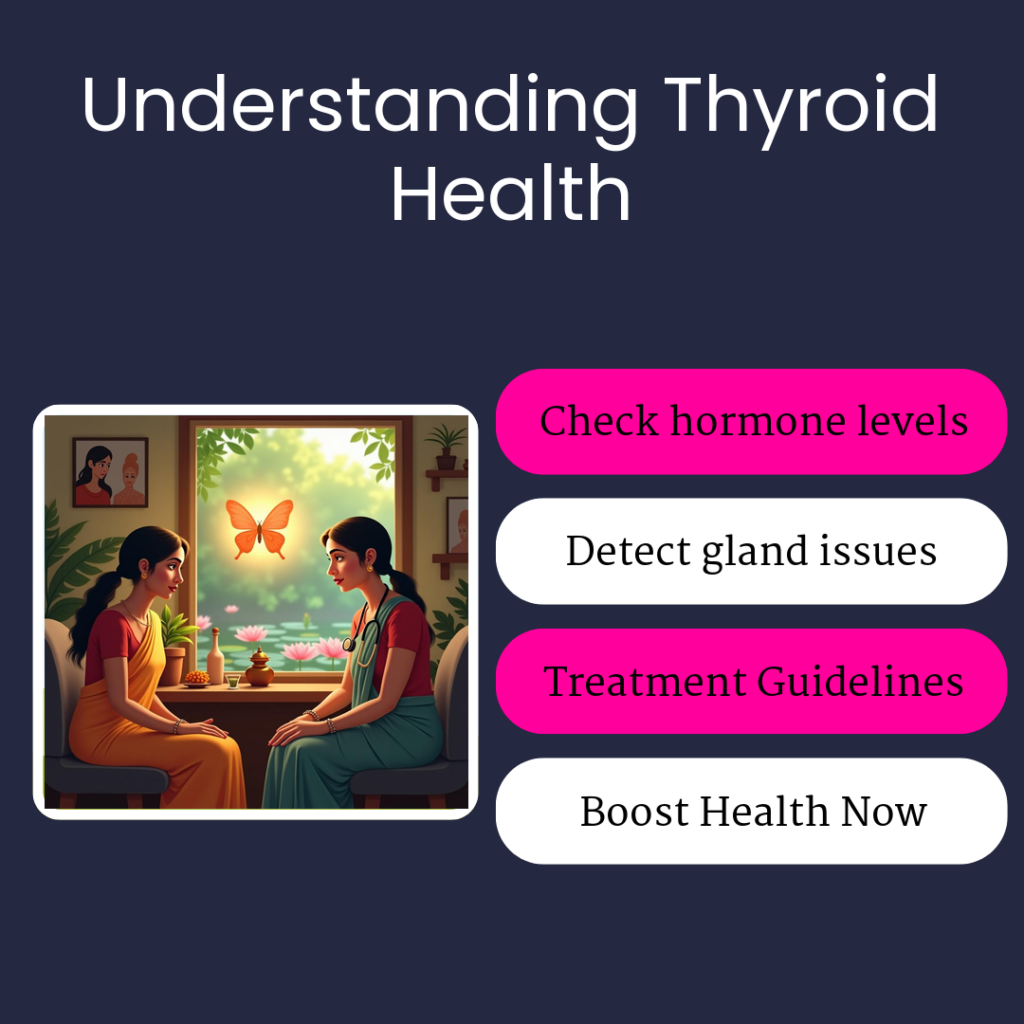Understanding how to check thyroid levels is the first step in managing hypothyroidism effectively. If you’re unfamiliar with this important process, fear not. Let me guide you through this essential journey, laden with insights and easy-to-follow steps. Knowing how to check thyroid levels ensures you’re on top of your health, avoiding potential complications. So, what’s involved?
Understanding Hypothyroidism: A Sneak Peek into Symptoms and Causes
Hypothyroidism occurs when your thyroid doesn’t make enough hormones your body needs. Knowing the symptoms early can help prevent problems like heart disease or nerve issues. But how do you know if you have it? By being aware of the signs, you can catch it sooner.
There’s a myth that hypothyroidism only affects older women and causes major weight gain. But surprisingly, anyone can develop it, including both men and younger people. While weight gain might happen, it’s usually manageable with the right approach. Spotting symptoms is crucial in managing it early.
Symptoms of hypothyroidism can be subtle and easily overlooked. Feeling tired all the time, even after enough sleep, is very common in this condition. Unexplained weight gain without dietary changes is another warning sign to watch for. Lastly, if you often feel cold when others don’t, it could be due to an inactive thyroid.
How to Check Your Thyroid Levels: A Comprehensive Guide
Monitoring your thyroid levels is essential for overall health. It helps you determine if your thyroid gland works properly, providing valuable information for treatments.
Blood tests are a standard method to check thyroid levels and involve TSH and T4 checks. At-home test kits offer another option, letting you gather samples at home for lab tests. This provides insight without needing a trip to a clinic.
Blood tests at healthcare centers are highly reliable. At-home testing can be very convenient but may not fully replace lab tests. They offer quick feedback for those interested in monitoring thyroid levels frequently. Find what aligns with your lifestyle and preferences.
TSH and Other Thyroid Hormone Tests: Demystifying the Results
The main tests to check your thyroid are TSH, T4, and T3. TSH tells you how much your thyroid needs boosting naturally each day. T4, also known as thyroxine, is a major hormone from the thyroid gland. T3 is more active than T4 and affects many functions in the body.
To know about your thyroid levels, get a blood test at the doctor’s office. TSH levels help determine if your thyroid is low or high activity. High TSH means your thyroid might be slow and needing more help. When they check T4 and T3, it shows if treatment needs adjusting soon.
Understanding results can seem hard but isn’t hard really. Typically, normal TSH ranges from 0.4 to 4.0 mIU/L on most tests. If your TSH is high, it might mean you have hypothyroidism. For T3 and T4, laboratories have their own norms to check against. Knowing these can guide if any further steps should be taken.
Preparing for a Thyroid Blood Test: What You Need to Know
Preparing for a thyroid blood test is not very complicated. You don’t always need to fast, but follow your doctor’s guidance closely.
Medications for other health problems can change how your tests turn out. Inform your technician about any supplements or medicines you’re currently taking.
Once you get your test results, compare them with standard ranges provided. Consult with your doctor to understand if your thyroid levels are within normal limits. If they are not, discuss possible treatment options to help manage the condition.
Interpreting and Understanding Your Thyroid Levels
Subclinical hypothyroidism is when TSH levels are high, but T4 and T3 are within normal. You might not notice symptoms, but it signals early thyroid issues. Catching it early helps with lifestyle changes and treatment consideration.
Further tests may be needed if a thyroid abnormality appears in results. Ultrasounds can help provide clear pictures of the thyroid. Regular follow-up appointments will ensure changes get addressed quickly, allowing treatment adjustments.
Discuss your results with your doctor to make a good health plan. This plan might involve eating differently, taking medicine, or changing some habits. By noting how you feel over time, you can see if the interventions work.
Modern Methods and Technology for Checking Thyroid Levels at Home
Home-based thyroid testing kits deliver both privacy and ease of use. They are great for avoiding endless trips to clinics for frequent checks. However, results should be confirmed by a doctor.
To use these kits, you need to prick your finger and get some blood. Then, simply follow the instructions to package and mail it properly. This process helps maintain accuracy in handling your sample.
Frequent checks are easier with home kits, but labs are best for precision. Many people find using both home kits and lab tests works well for regular monitoring.
Hypothyroidism Management: Beyond Checking Levels
Start managing hypothyroidism with proper medication like levothyroxine. Doctors prescribe levothyroxine to replace low hormone levels in your body. It’s essential to follow a doctor’s advice for taking the right dosage. They will monitor and adjust your dose based on your needs.
Regular testing is crucial for maintaining hormone levels within normal range. Checking levels helps determine if there are any necessary medication adjustments. Doctors use blood tests to observe the balance of TSH and T4 in your body. Such tests indicate how well you respond to treatment, ensuring optimal health.
Lifestyle choices significantly impact managing hypothyroidism, alongside medication. Eating a healthy diet full of fruits, vegetables, and lean proteins can sustain energy levels. Consistent physical activity can help lessen fatigue, a typical symptom. Stress reduction methods like yoga or meditation support your overall health.
Unaddressed Hypothyroidism: Potential Complications and Risks
Ignoring signs of hypothyroidism can cause serious health problems for many. If not treated, low thyroid hormones will slow your body’s systems. This can lead to unusual tiredness, feeling down, or slow reactions.
Not taking care of hypothyroidism might result in very serious health issues. Your heart can suffer due to increased cholesterol levels over time. It may also cause problems like not being able to have children and pain in the joints.
Getting medical help when you notice thyroid problems is important. Early diagnosis and treatment help manage symptoms and improve health. Learning how to check thyroid levels and tracking them regularly can reduce untreated risks.
To perform a thyroid check using a blood test: 1. Pay attention to the numbers in the report. 2. Conduct home tests available for preliminary understanding. 3. Ensure that laboratory tests confirm your hormone levels. 4. Speak with doctors about what thyroid level results mean. 5. Keep your health by following treatment plans given by specialists.
Conclusion: The Imperative of Regular Thyroid Checks in Ensuring Optimal Health
Routine checks on the thyroid are essential for managing health. Regular monitoring can quickly catch any imbalance in thyroid levels and help prevent possible setbacks.
Hypothyroidism management goes beyond just diagnosis and medication alone. It needs active participation through regular tests and lifestyle changes. Knowing how to check thyroid levels empowers health decisions, allowing for better management. With proactive measures, living a fulfilling life with thyroid conditions is entirely possible.

